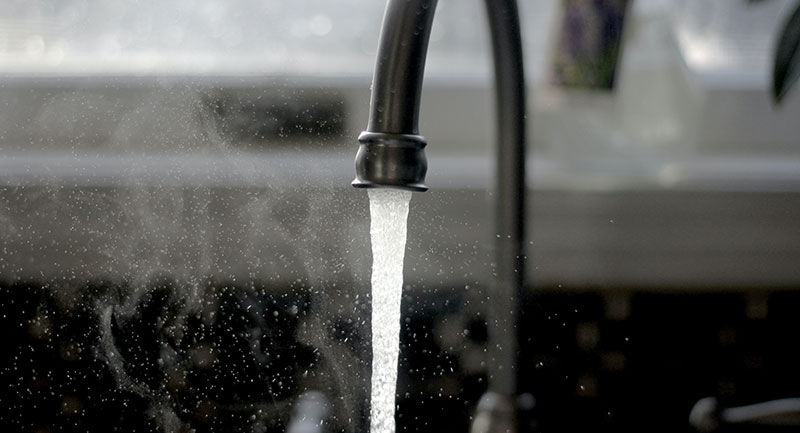Advertisement
Discovering a water leak inside your wall can be a homeowner’s nightmare. It’s not just about the immediate inconvenience and potential damage; it’s also the uncertainty and stress it brings. However, finding a water leak inside a wall is crucial to prevent further damage and costly repairs
When to Call a Professional
While some minor leaks can be fixed by homeowners, there are situations where it’s best to call a professional plumber in Sydney:
Extensive Damage: If the damage is widespread and you’re not confident in your repair skills, consult a professional contractor or restoration specialist.
Hidden Leaks: If you can’t pinpoint the source of the leak or it’s located in a hard-to-reach area, a professional plumber in Sydney with specialized equipment may be needed.
Structural Concerns: If you suspect structural damage to your home, it’s crucial to consult an engineer or contractor.
Signs of a Water Leak
Before you start tearing down walls or drilling holes, it’s essential to recognize the signs of a water leak inside your wall. Identifying these symptoms can help you pinpoint the problem area more accurately. Common signs include:
Visible Water Stains: Look for discolored patches or streaks on your wall or ceiling. These are often a clear indicator of water infiltration.
Bubbling or Peeling Paint or Wallpaper: Moisture can cause paint or wallpaper to bubble, crack, or peel. If you notice this happening in a specific area, investigate further.
Musty Odor: A damp, musty smell in a particular room could indicate water is lurking behind the walls.
Soft or Warped Drywall: Gently press on your walls. If they feel soft, squishy, or show signs of warping, there may be hidden water damage.
Mold or Mildew Growth: Mold and mildew thrive in damp environments. If you spot any growth on your walls or ceilings, it’s a strong sign of moisture infiltration.
Investigate the Problem Area
Now that you’ve gathered your tools, it’s time to investigate the problem area. Follow these steps:
Turn Off the Water: To ensure your safety and prevent further leakage, turn off the water supply to the affected area.
Examine the Visible Signs: Start by closely examining the visible signs you identified earlier. Pay attention to areas with stains, peeling paint, or soft spots.
Tap the Walls: Gently tap the walls with your knuckles. Listen for differences in sound. Hollow, damp, or soggy sounds can indicate water damage.
Use a Moisture Meter: Use the moisture meter to check the moisture levels in different areas of the wall. This can help you pinpoint the most affected spots.
Remove Wall Coverings
Once you have a general idea of where the leak might be, it’s time to remove the wall coverings to access the affected area. Follow these steps:
Safety First: Put on your safety gear, including goggles, gloves, and a dust mask.
Remove Baseboards: If the water damage is near the base of the wall, carefully remove the baseboards using a screwdriver.
Cut Drywall: If necessary, use a utility knife to cut out a section of the drywall. Start with a small hole to assess the damage. Gradually enlarge the hole until you can see the source of the leak.
Inspect the Area: Use your flashlight to thoroughly inspect the area behind the wall covering. Look for wet insulation, pipes, or any other signs of water intrusion.
Confirm the Source of the Leak
At this point, you should have a clear view of the affected area. To confirm the source of the leak, consider these steps:
Check Plumbing: If you see a leaking pipe, take a picture or note its location. Turn the water back on briefly to verify if the leak starts again.
Inspect Roof and Windows: Sometimes, leaks can originate from the roof or around windows. Check these areas for any visible damage or gaps.
Run Water: If you couldn’t identify the source, run water in nearby fixtures like faucets or showers and observe if the leak becomes more pronounced.
Repair and Remediation
Once you’ve located the source of the leak, it’s time to address the issue. Depending on the severity, you may need to take one or more of the following actions:
Fix the Plumbing: If it’s a plumbing issue, repair or replace the damaged pipe. If you’re not comfortable with plumbing work, hire a professional plumber.
Seal Roof or Window Leaks: If the issue is related to the roof or windows, patch any visible gaps or replace damaged materials. Consider hiring a roofing or window professional for extensive repairs.
Dry the Affected Area: Allow the area to dry completely to prevent mold growth. Use fans and dehumidifiers if necessary.
Replace Insulation and Drywall: Replace any wet insulation and damaged drywall. Ensure everything is thoroughly dried before reinstalling.
Prevent Future Leaks: Take steps to prevent future leaks, such as maintaining your plumbing and conducting regular inspections.
Conclusion
Finding a water leak inside a wall can be a challenging and stressful task, but it’s essential for preventing further damage and costly repairs. By identifying the signs, gathering the right tools, and carefully investigating the problem area, you can take the necessary steps to address the issue and protect your home. Remember, safety should always be a priority, and when in doubt, don’t hesitate to seek professional help.

